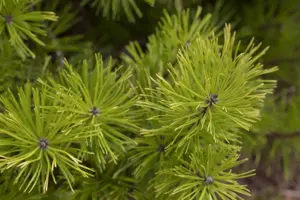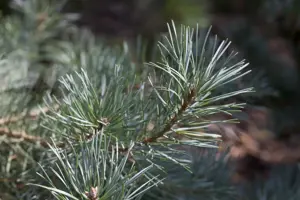Rosa (o) rubiginosa - 60-100 CM C2
Rosa (o) rubiginosa - 60-100 CM C2
Description
The Eglantine rose (Rosa rubiginosa) is a bushy, dense shrub with decorative, scarlet-red, oval fruits. These exude a pleasant fragrance. It produces pink-coloured, cup-shaped flowers from June to July. The Eglantine rose also has pinnate, dark green leaves. In a sunny to semi-shady location, it usually reaches a height of around 3 metres and grows to around 3 metres wide. The Eglantine rose makes no particular demands on the soil.
Synonym
Synonyms (botanical): Rosa elganteria.
Bulletpoints
* Fruit ornamentation
* the flowers are highly favoured by bees, bumblebees and hoverflies
* cut flower
* fragrant flowers
* attractive yellow autumn colouring
* suitable for containers
* drought-resistant, tolerant of urban climates, heat-loving
leaves
The deciduous leaves of the Eglantine rose are dark green, pinnate and alternate. They are about 5 - 7 cm in size. Eglantine rose turns bright yellow in autumn.
Spread
Europe.
Frost hardiness
The Eglantine rose has good frost hardiness.
Growth
Eglantine rose is a bushy and dense growing shrub. It usually reaches a height of 2 - 3 m and is approx. 2 - 3 m wide.
Water
The plant has a medium water requirement.
Location
Preferred location in a sunny to semi-shady position.
Soil
No special requirements
Standard container plant soil.
Planting time
Container plants can be planted all year round, except when the soil is frozen and in summer heat (over 30°C).
Tasks
- Fertilise: In the period from March to May.
Care
- Parts of the plant infected with mildew must be cut off, otherwise the disease can spread further. To prevent new infections, the rose can be treated with appropriate fungicides.
- If infected with star sooty mould, all diseased leaves (black spots) should be removed. If necessary, treatment with suitable fungicides is also recommended.
- To encourage the formation of new flower buds, wilted flowers should always be cut back to the next fully formed leaf.
- Roses should never be planted where roses have already been growing. If no other planting site is available, the soil should be generously replaced.
Flower
The pink-coloured, cup-shaped flowers appear from June to July. They grow to about 3 - 5 cm and are pleasantly fragrant.
Fruit
The scarlet-red, oval fruits of Rosa rubiginosa are particularly decorative. These appear from September.
Use
Tubs, cutting, group planting, cottage garden, bee pasture, bird food plant, jam, liqueur
Shoots
The shoots of Rosa rubiginosa are spiny.
Root
Rosa rubiginosa is a deep-rooting plant.
- Article number2500
-
EAN codeRORUBIGI-2060100C2
- Latin nameRosa (o) rubiginosa
- catalogLandscape shop



